Aryan Invasion
Theory: Revising History to Change the
Future
Siddhartha
Jaiswal
Stanford Universit
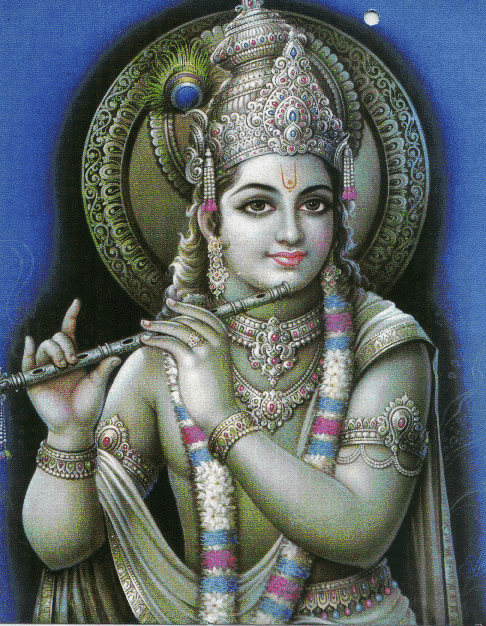 Growing up, I used to love
hearing my mother tell me the stories of the
Mahabharata
and the
Ramayana,
two of ancient India's greatest epic poems. Heroes
like Krishna, Rama, and Arjuna were my role models
and integral parts of my cultural identity. The
great war between the Pandavas and the Kauravas and
Rama's fourteen year trek through the jungles of
India and Lanka were not just fanciful children's
stories to me; this was Indian history, according
to our tradition. But once I entered grade school,
I was taught our history was wrong. Growing up, I used to love
hearing my mother tell me the stories of the
Mahabharata
and the
Ramayana,
two of ancient India's greatest epic poems. Heroes
like Krishna, Rama, and Arjuna were my role models
and integral parts of my cultural identity. The
great war between the Pandavas and the Kauravas and
Rama's fourteen year trek through the jungles of
India and Lanka were not just fanciful children's
stories to me; this was Indian history, according
to our tradition. But once I entered grade school,
I was taught our history was wrong. 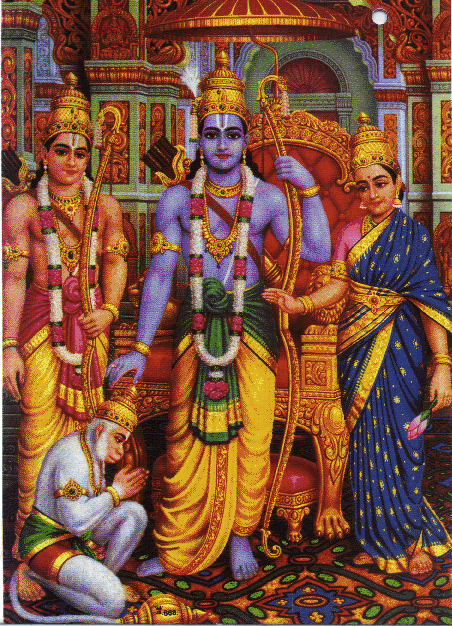
According to the Western view of Indian history,
the Mahabharata was probably just a petty skirmish
between tribes, if it ever happened at all, and
Rama most likely never even existed. In fact, the
only thing definitive the textbooks said about
Indian history was that a group of tall,
fair-skinned nomads called Aryans invaded India,
displacing the native population and creating the
current Indian culture. All of Indian history, as
Indians understood it, was merely mythology or the
musings of some talented storyteller. Moreover, the
Indian civilization was not even indigenous to
India; rather, it was created by the same people
who had established civilization in Ancient Greece
and the Middle East.
What these textbooks said greatly undermined my
belief in my culture. It meant that all the stories
I heard as a child were just fantasy; it meant that
my culture was founded by violent barbarians; it
meant that everything my culture had accomplished
was lessened because it had a foreign origin.
Needless to say, I, as a thirteen year old boy, was
not flattered by this picture of my nation's past.
What I did not know then was that the Aryan
Invasion Theory (AIT), which has always been
disputed by prominent Indian scholars, was falling
into disrepute among current historians as well. I
learned much later that AIT was developed by
Eurocentric historians who had certain biases
regarding Indian culture. Today, however, AIT is no
longer accepted as fact. But why is the debate over
AIT such a pressing issue in modern India? The
answer is that AIT has several serious implications
for Indians, especially in our contemporary
society. First, a belief in a foreign origination
of Indian culture has marginalized the importance
of Indian history for many, like me. It has also
led many educated Hindus to develop feelings of
shame and a Eurocentric attitude toward their own
culture. Second, AIT has a decidedly negative
impact on the contemporary Indian political and
social fabric. It has created divisions between
North and South Indians, different ethnic groups,
and between castes. Finally, AIT needs to be
discarded by the very demands of historical truth.
The Indian psyche and social system has suffered
greatly because AIT, and some measure of justice
must be exacted before these wounds can heal. By
discrediting AIT, Indians can regain pride in their
ancient and glorious history, and use it as a
foundation to build a more united, stronger India.
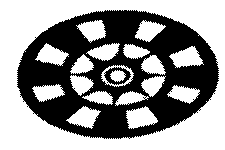 In order to understand more fully the
damaging effects AIT has had in India, it is
necessary to examine the theory in some detail and
explore the biases and misconceptions of those who
originally proposed it. These late nineteenth
century scholars, who included such luminaries as
Max Muller and Max Weber, strongly believed in a
race of people known as Aryans who were the
ancestors and founders of culture in ancient
Greece, Mesopotamia, and India. The Aryans,
according to these scholars were tall,
fair-skinned, light-eyed nomads. The Aryans invaded
India around 1500 BC and displaced the
darker-skinned native population there, eventually
subjecting them to the Aryan culture and religion.
They forced the natives, known as Dravidians, to
move south and put them into the lowest castes of
Aryan society. Eventually, through centuries of
interbreeding and cultural miscegenation, the
current Hindu society was formed. The main evidence
for an Aryan race came from the fact that Sanskrit,
the classical language of ancient India, bore a
striking resemblance to Greek, Latin, and other
European tongues. This similarity gave rise to a
new language group: the Indo-European languages.
When, in the 1920s, the ancient cities of Harappa
and Mohenjodaro were discovered in northwest India,
they appeared to be abandoned for no apparent
reason. The invasion theorists took this as
evidence that an Aryan invasion had occurred, and
had displaced the earlier civilization. In order to understand more fully the
damaging effects AIT has had in India, it is
necessary to examine the theory in some detail and
explore the biases and misconceptions of those who
originally proposed it. These late nineteenth
century scholars, who included such luminaries as
Max Muller and Max Weber, strongly believed in a
race of people known as Aryans who were the
ancestors and founders of culture in ancient
Greece, Mesopotamia, and India. The Aryans,
according to these scholars were tall,
fair-skinned, light-eyed nomads. The Aryans invaded
India around 1500 BC and displaced the
darker-skinned native population there, eventually
subjecting them to the Aryan culture and religion.
They forced the natives, known as Dravidians, to
move south and put them into the lowest castes of
Aryan society. Eventually, through centuries of
interbreeding and cultural miscegenation, the
current Hindu society was formed. The main evidence
for an Aryan race came from the fact that Sanskrit,
the classical language of ancient India, bore a
striking resemblance to Greek, Latin, and other
European tongues. This similarity gave rise to a
new language group: the Indo-European languages.
When, in the 1920s, the ancient cities of Harappa
and Mohenjodaro were discovered in northwest India,
they appeared to be abandoned for no apparent
reason. The invasion theorists took this as
evidence that an Aryan invasion had occurred, and
had displaced the earlier civilization.
In formulating this theory, the proponents of
AIT had very set ideas about race and culture.
"European thinkers of the era were dominated by a
racial theory of man, which was interpreted
primarily in terms of color" (Frawley 1996). In
this era of European expansionism and colonialism,
Europeans had enslaved much of Africa, Asia, and
the Americas. The European conquerors were
primarily white, and the conquered peoples were
primarily dark-skinned. Similarly, the Aryan
Invasion was seen as a racial group with a common
culture and language who came to India and
dominated all those who were different racially or
spoke a different language. They assumed that the
original speakers of Indo-European language had to
be lighter skinned; thus, the darker-skinned Hindus
could not have been the original speakers. However,
scholars are only now realizing that the simplicity
of AIT does not explain the enormous complexity of
Indian culture and society, nor does it even fit
with the known facts. "The Aryan invasion theory is
an example of European colonialism turned into a
historical model" (Frawley 1994). AIT was certainly
not the work of objective and open-minded scholars.
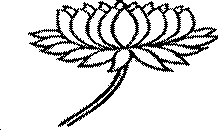 In addition, those who proposed the
theory were often ardent nationalists or
Christians, opposed to anything that would glorify
a great culture of non-European, non-Christian
origin. Max Muller had set the date for Aryan
invasion at 1500 BC But Muller's basis for such a
date was completely speculative. "Max Muller, like
many of the Christian scholars of his era, believed
in Biblical chronology" (Frawley 1994). Given then
that the world was created in 4000 BC and the flood
occurred in 2500 BC, it was impossible to give the
Aryan invasion a date earlier than 1500 BC Also,
many of these scholars had dubious credentials and
motives. "Max Muller in fact had been paid by the
East Indian Company to further its colonial aims,
and others like Lassen and Weber were ardent German
nationalists, with hardly any authority on India,
only motivated by the superiority of German
race/nationalism through white Aryan race theory"
(Agarwal 1995). In addition, those who proposed the
theory were often ardent nationalists or
Christians, opposed to anything that would glorify
a great culture of non-European, non-Christian
origin. Max Muller had set the date for Aryan
invasion at 1500 BC But Muller's basis for such a
date was completely speculative. "Max Muller, like
many of the Christian scholars of his era, believed
in Biblical chronology" (Frawley 1994). Given then
that the world was created in 4000 BC and the flood
occurred in 2500 BC, it was impossible to give the
Aryan invasion a date earlier than 1500 BC Also,
many of these scholars had dubious credentials and
motives. "Max Muller in fact had been paid by the
East Indian Company to further its colonial aims,
and others like Lassen and Weber were ardent German
nationalists, with hardly any authority on India,
only motivated by the superiority of German
race/nationalism through white Aryan race theory"
(Agarwal 1995).
To what ends was AIT used by the colonizers in
India? It served primarily as a tool for
justification of the British presence in India. The
British argued that they were doing only what had
been done by the Aryans centuries before (Agarwal
1995). In effect, it gave the British a way to
rationalize their brutal exploitation and
domination of India. It also seemed to lessen the
severity of the equally brutal Muslim invasions of
India prior to the British arrival. This is perhaps
the most terrible use of AIT by the historians.
India was described as a land dominated by
foreigners ever since its inception. Karl Marx even
wrote that the whole history of India was a series
of invasions (Sukhwal 1971). How could such a
"dominated" people find value and pride in their
culture? Of what use were Rama and Krishna when
they inevitably lost to the hordes of barbarians
that plundered India?
The British also used AIT to 'divide and
conquer' India. "They promoted religious, ethnic,
and cultural divisions among their colonies to keep
them under control" (Frawley 1996). Often, various
principalities and kingdoms were played off against
each other by inciting regional or cultural
tensions in order to make British domination that
much easier. Unfortunately, many of these divisions
are still present in Indian society today.
 The primary schism caused by AIT is
the north/south divide of India along racial lines.
The European scholars interpreted certain verses in
the Vedas (Hinduism's oldest surviving texts),
which described wars between lightness and
darkness, to mean that clashes between
light-skinned Aryans and dark-skinned Dravidians
occurred (Frawley 1996). As evidence for their
claim, they point to the constant references to
people described as 'Aryan' in the Vedas. However,
this is a skewed interpretation of Hindu texts
based on European ideals. "In Vedic literature, the
word Arya is nowhere defined in connection with
either race or language" (Agarwal 1995). Arya,
instead, is a title of respect, similar to the
English title 'sir'. An Aryan is one who is truly
noble by his deeds, intelligence, and sense of
duty: "Intrinsically, in its most fundamental
sense, Arya means an effort or an uprising and
overcoming" (Aravind 1996). In the Vedas, many of
the defeated kings of supposedly Dravidian stock
are described as Aryan. Many of these kings also
trace back their lineage to Manu, the first man, as
do the 'Aryan' kings. There simply is no Vedic
evidence of a racial connotation for the term Arya.
Eventually, a number of the European scholars,
including Max Muller, recanted their belief that
Aryan denoted a race. However, this was largely
ignored by others who became enamored by the idea
of an Aryan race and exploited this idea for
political gain. The primary schism caused by AIT is
the north/south divide of India along racial lines.
The European scholars interpreted certain verses in
the Vedas (Hinduism's oldest surviving texts),
which described wars between lightness and
darkness, to mean that clashes between
light-skinned Aryans and dark-skinned Dravidians
occurred (Frawley 1996). As evidence for their
claim, they point to the constant references to
people described as 'Aryan' in the Vedas. However,
this is a skewed interpretation of Hindu texts
based on European ideals. "In Vedic literature, the
word Arya is nowhere defined in connection with
either race or language" (Agarwal 1995). Arya,
instead, is a title of respect, similar to the
English title 'sir'. An Aryan is one who is truly
noble by his deeds, intelligence, and sense of
duty: "Intrinsically, in its most fundamental
sense, Arya means an effort or an uprising and
overcoming" (Aravind 1996). In the Vedas, many of
the defeated kings of supposedly Dravidian stock
are described as Aryan. Many of these kings also
trace back their lineage to Manu, the first man, as
do the 'Aryan' kings. There simply is no Vedic
evidence of a racial connotation for the term Arya.
Eventually, a number of the European scholars,
including Max Muller, recanted their belief that
Aryan denoted a race. However, this was largely
ignored by others who became enamored by the idea
of an Aryan race and exploited this idea for
political gain.
In fact, this idea of North and South Indians
being explicitly different has been a major source
of tension in the modern Indian republic. According
to Romila Thapar, a professor of Ancient Indian
history, "The theory of Aryan race has not only
served cultural nationalism in India but continues
to serve Hindu revivalism and, inversely,
anti-Brahman movements" (Thapar 1992). After India
gained independence in 1949, there was a call for
reorganization of Indian states on the basis of
language and cultural identity. A Dravidian
movement in South India, encouraged by the idea of
Aryan domination of Dravidian people, developed in
several southern states. Its goal was nothing short
of secession, and creation of a 'Dravinadu' nation.
Fortunately, the movement never gained force, but
it left wide rifts between North and South India.
In its wake came the formation of the Dravida
Munnetra Kazhagam party in 1967. Their basic
platform was that "Dravidians, the folk of South
India, were systematically expropriated and
enslaved by Brahmans and their ideology of
brahmanical superiority, which they-originally
migrants from North India-derived from the Sanskrit
texts of north-Indian Hindu injunctive culture"
(Stern 1993). These Dravidian movements have lasted
to the present and continue to have an affect in
Indian politics and serve to divide the nation.
 There is, however, no logical basis for
this schism. Other than linguistic differences,
North and South India share much of the same
culture and religion. The major cause of this undue
tension is the belief in separate Aryan and
Dravidian races. Some historians have classified
the Indian pantheon of deities into two types:
Northern gods and Southern gods. Vishnu is
supposedly the most prominent Northern god because
he is mentioned several times in the Vedas. Shiva
is not considered an Aryan god because he is not
prominent in the Vedas. However, Shaivism and
hero-worship of Krishna are common throughout
India. My family, which is North Indian, worships
both of these figures. I have never been taught
that darker-skinned gods are Dravidian and
therefore inferior. In fact, Rama and Krishna are
both depicted as dark complexioned, and they are
the most famous of all the Indian heroes.
Unfortunately, though there is no true division of
Hinduism into Northern and Southern sects, regional
differences in culture have been exploited and used
to divide India. There is, however, no logical basis for
this schism. Other than linguistic differences,
North and South India share much of the same
culture and religion. The major cause of this undue
tension is the belief in separate Aryan and
Dravidian races. Some historians have classified
the Indian pantheon of deities into two types:
Northern gods and Southern gods. Vishnu is
supposedly the most prominent Northern god because
he is mentioned several times in the Vedas. Shiva
is not considered an Aryan god because he is not
prominent in the Vedas. However, Shaivism and
hero-worship of Krishna are common throughout
India. My family, which is North Indian, worships
both of these figures. I have never been taught
that darker-skinned gods are Dravidian and
therefore inferior. In fact, Rama and Krishna are
both depicted as dark complexioned, and they are
the most famous of all the Indian heroes.
Unfortunately, though there is no true division of
Hinduism into Northern and Southern sects, regional
differences in culture have been exploited and used
to divide India. 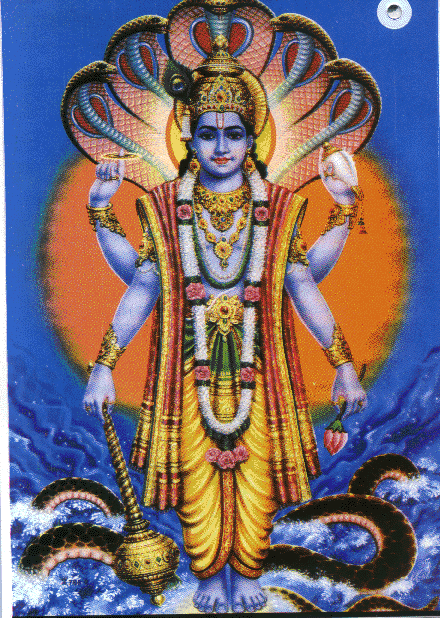
 This problem of the north/south divide
is indicative of an even larger problem in India:
the question of national unity. If one accepts that
modern India is the result of an Aryan invasion of
a random assortment of native tribes and peoples,
then the question of Indian unity is resoundingly
negative. This, in fact, is the view that many
British scholars had of India. Sir John Seeley, a
British historian, wrote in 1883: This problem of the north/south divide
is indicative of an even larger problem in India:
the question of national unity. If one accepts that
modern India is the result of an Aryan invasion of
a random assortment of native tribes and peoples,
then the question of Indian unity is resoundingly
negative. This, in fact, is the view that many
British scholars had of India. Sir John Seeley, a
British historian, wrote in 1883:
The notion that India is a
nationality rests upon that vulgar error which
political science principally aims at eradicating.
India is not a political name, but only a
geographical expression, like Europe or Africa. It
does not mark the territory of a nation and a
language, but the territory of many nations and
many languages (Handa 1983).
The result of this type of thinking has lasted
into the present, and has led to calls for
secession from all sorts of ethnic groups ranging
from Punjabis to Bengalis to Keralis. Fortunately,
there have been voices which have opposed this
colonial mindset and brought to light the cultural
unity of India. Sardar K.M. Panikkar, a
Congressman, stated that "there was no such thing
as Assamese, Bengali or Kerala culture; there was
only one Indian culture which emanated from the
Mahabharata and the Ramayana"
(Sukhwal 1971).
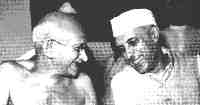 In fact, all of the Vedic rishis are
in agreement that, according to scripture, there
was only one Indian culture, and it was founded by
Manu at the time of the flood. Swami Vivekananda, a
Hindu guru who toured the West in the late
nineteenth century, wrote: "The only explanation
can be found in the Mahabharata, which says that in
the beginning of Satya Yuga there was only one
caste, the Brahmanas, and then by difference of
occupation they went on dividing themselves into
castes" (Vivekananda 1893). Madhav M. Deshpande, of
the Department of Linguistics at the University of
Michigan, asserts that, "If we remove the mantle of
mythology and mysticism, the classical Indian
literature shows an awareness of this notion of
India as a cultural area" (Deshpande 1983). Thus,
according to Indian history, India was in the past
a unified nation of one people with a common
tradition and culture. Only by accepting a European
view of Indian history does the notion of a divided
India arise. Unfortunately, those who receive a
Westernized education, like me, only see the
European view of world history. In fact, all of the Vedic rishis are
in agreement that, according to scripture, there
was only one Indian culture, and it was founded by
Manu at the time of the flood. Swami Vivekananda, a
Hindu guru who toured the West in the late
nineteenth century, wrote: "The only explanation
can be found in the Mahabharata, which says that in
the beginning of Satya Yuga there was only one
caste, the Brahmanas, and then by difference of
occupation they went on dividing themselves into
castes" (Vivekananda 1893). Madhav M. Deshpande, of
the Department of Linguistics at the University of
Michigan, asserts that, "If we remove the mantle of
mythology and mysticism, the classical Indian
literature shows an awareness of this notion of
India as a cultural area" (Deshpande 1983). Thus,
according to Indian history, India was in the past
a unified nation of one people with a common
tradition and culture. Only by accepting a European
view of Indian history does the notion of a divided
India arise. Unfortunately, those who receive a
Westernized education, like me, only see the
European view of world history.
Not only has AIT served to justify British
conquest of India and divide the country on racial
and ethnic lines, but it has also had a negative
effect on Indian nationalism. Perhaps the single
greatest blow to Indian nationalism dealt by AIT
was its denial and marginalization of Indian
history according to Indians. Indian history is
seen as secondary to the history of the West. The
Vedic culture is considered to be an offshoot of
Middle Eastern cultures. The sciences of India were
also considered to be derived from the Greeks.
Vedic advances in astronomy and mathematics were
largely ignored because of the 'primitive' nature
of the Vedic culture. AIT also discredited many of
the great historical works of Indian literature,
such as the Mahabharata, Ramayana,
and the Puranas. All of the great Indian
heroes, including my favorites Rama and Krishna,
were dismissed as fictional characters without
historical basis. This rejection of Indian
tradition is tantamount to "disowning and
discarding the very basis and raison d'être
of the Hindu civilization" (Agarwal 1995). The net
result of this demeaning of Indian culture was to
generate feeling of shame at Hindu culture, a
feeling that "its basis is neither historical nor
scientific, but only imaginary, while being
actually rooted in invasion and oppression"
(Frawley 56). It made Hindus feel like their
culture was based on the writings of nomadic
barbarians and was inherently inferior to the
Western civilization.
 Even in India today, schools teach
Western views of Indian history and use European
translations of the great texts. Children are being
taught that their culture is inherently inferior to
the Western tradition and that Hinduism is an
archaic and outdated pagan religion. This creates a
dichotomy within the educated Indian's mind between
observing tradition and risk being considered
'backward', or rejecting Indian culture altogether
in favor of a more rational, Western attitude. It
is not surprising that the notion of an Aryan
invasion was welcomed by some Indians who accepted
the Western view of Indian civilization: "There was
an appeal to some middle class Indians that the
coming of the English represented a reunion of
parted cousins, the descendants of two different
families of the ancient Aryan race" (Thapar 1992).
For the Indian living in a Western society, this
dichotomy is at the forefront of his identity. For
me, accepting Indian culture and tradition after
reading about it in Western books was a difficult,
if not impossible task. Not until I discovered the
dubious origins and factual inconsistencies of AIT,
and the implications therein, did I could regain
the sense of pride I once found by reading the
stories of Rama and Krishna. Even in India today, schools teach
Western views of Indian history and use European
translations of the great texts. Children are being
taught that their culture is inherently inferior to
the Western tradition and that Hinduism is an
archaic and outdated pagan religion. This creates a
dichotomy within the educated Indian's mind between
observing tradition and risk being considered
'backward', or rejecting Indian culture altogether
in favor of a more rational, Western attitude. It
is not surprising that the notion of an Aryan
invasion was welcomed by some Indians who accepted
the Western view of Indian civilization: "There was
an appeal to some middle class Indians that the
coming of the English represented a reunion of
parted cousins, the descendants of two different
families of the ancient Aryan race" (Thapar 1992).
For the Indian living in a Western society, this
dichotomy is at the forefront of his identity. For
me, accepting Indian culture and tradition after
reading about it in Western books was a difficult,
if not impossible task. Not until I discovered the
dubious origins and factual inconsistencies of AIT,
and the implications therein, did I could regain
the sense of pride I once found by reading the
stories of Rama and Krishna.
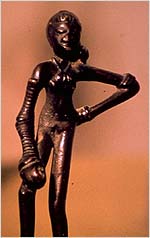 Over the past fifteen years, a
tremendous amount of new evidence has surfaced that
refutes the Aryan Invasion Theory. Provided here is
a brief summary of some of the evidence to date.
First, there is absolutely no evidence of a foreign
origin for the so-called Aryans in any of the
Indian texts. The Vedas, the most important and
oldest texts in the Hindu religion, make no mention
of foreign lands or invasions (Talageri 1993). If
the Vedas are the foundational texts of the Aryans,
why do they not make mention of anything outside of
India? Over the past fifteen years, a
tremendous amount of new evidence has surfaced that
refutes the Aryan Invasion Theory. Provided here is
a brief summary of some of the evidence to date.
First, there is absolutely no evidence of a foreign
origin for the so-called Aryans in any of the
Indian texts. The Vedas, the most important and
oldest texts in the Hindu religion, make no mention
of foreign lands or invasions (Talageri 1993). If
the Vedas are the foundational texts of the Aryans,
why do they not make mention of anything outside of
India?
Second, new archaeological findings at the
ancient sites of the Harappan culture show no
evidence of a foreign invasion. These sites, which
supposedly predate Vedic culture by at least a
thousand years, show evidence of Vedic religious
practice (Agarwal 1995). In addition, the lost city
of Dwaraka, which is mentioned in the Mahabharata
as being gradually submerged into the ocean, was
recently found in the Arabian Sea off the coast of
Gujarat, and dated at 3000-1500 BC This confirms
both the antiquity of the Mahabharata and
Ramayana, as well as the historical truth of
the works. Also, a study of ancient Middle Eastern
cultures has shown evidence of a thriving Vedic
culture for a thousand years after the
Harappan culture, suggesting an east to west
migration of people from India, and not vice
versa.
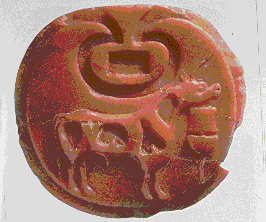 Third, new philological evidence has
surfaced with the deciphering of the Harappan
civilization script. The script has been deciphered
by Dr. S.R. Rao, and has been confirmed to be of an
Indo-Aryan base. Hence, the inhabitants of the
Harappan civilization could not have been
Dravidians, as proposed in AIT. Third, new philological evidence has
surfaced with the deciphering of the Harappan
civilization script. The script has been deciphered
by Dr. S.R. Rao, and has been confirmed to be of an
Indo-Aryan base. Hence, the inhabitants of the
Harappan civilization could not have been
Dravidians, as proposed in AIT.
Finally, there is no racial evidence that there
is any real racial difference among the peoples of
India. In fact, according to a recent landmark
study of race (The History and Geography of Human
Genes), Europeans, Middle Easterners, and all
Indians belong to a single race of Caucasian type
(Agarwal 1995). In addition, anthropological
evidence indicates that the inhabitants of ancient
Gujarat and Punjab are ethnically the same as the
present day populations of those areas (Frawley
1994).
The reevaluation of history occurring in India
is part of a larger, growing trend of non-European
cultures to rectify the injustices done to their
nations' histories. The implications for India, and
for the world at large, are significant. For India,
the refutation of AIT places Hinduism and the
culture of India in a much older and significant
context in the annals of history. If AIT is
rejected, it would mean that the Vedas are the
oldest religious texts in the world, Hinduism the
oldest surviving religion, and the Indian culture
the oldest living culture in the world. It would
also serve to unify the country by proving its past
solidarity and the common history of its peoples.
Finally, it would put Indian literature and
science, long regarded as primitive, into a place
of historical importance. But the larger
implications of challenging AIT are as equally
important. If Indian scholars can successfully
challenge what has long been regarded as truth by
the European tradition, then other cultures will
also have the same hope of rewriting their
histories from a non-Western point of view. For too
long, the development of Western civilization has
been regarded as the only important one in world
history, with other equally important cultures
given only token acknowledgment. After all, how a
culture views itself historically ultimately
determines what kind of future it can build. And
finally, the refuting of AIT will help heal wounds
on a personal level. I know that discovering that
AIT is not necessarily factually true has made me
come to terms with my culture and helped me learn
to respect the greatness of its tradition. My hope
is that it will help others to do the same.
 References
References
Aravind, Yogi. (1996). Arya: Its
Significance [Online]. Aryan Invasion Theory
Links. Available Internet:
http://rbhattnagar.ececs.uc.edu:8080/hindu_history/ancient/aryan/
aryan_link.html
Agarwal, Dinesh. (1995, November 8). Demise of
Aryan Invasion/Racial Theory [Online]. Available
Internet: NEWS:
soc.religion.hindu
Deshpande, Madhav M. (1983). Nation and Region:
A Socio-Linguistic perspective on Maharashtra. In
Milton Israel (Ed.), National Unity: The South
Asian Experience (pp. 111-134). New Delhi:
Promilla.
Frawley, David. (1996). The Aryan-Dravidian
Controversy [Online]. Aryan Invasion Theory
Links. Available Internet:
http://rbhattnagar.ececs.uc.edu:
8080/ hindu_history/ancient/aryan/
aryan_link.html
Frawley, David. (1994). The Myth of the Aryan
Invasion of India. New Delhi: Voice of
India.
Handa, Madan L. (1983). National Unity, Social
Justice and Education: The Indian Experience. In
Milton Israel (Ed.), National Unity: The South
Asian Experience (pp. 47-76). New Delhi:
Promilla.
Stern, Robert W. (1993). Changing India.
Cambridge: Cambridge University Press.
Sukhwal, B.L. (1971). India: A Political
Geography. New Delhi: Allied.
Talageri, Shrikant G. (1993). The Aryan
Invasion Theory: A Reappraisal. New Delhi:
Aditya Prakashan.
Thapar, Romila. (1992). Interpreting Early
India. New Delhi. Oxford Universiy Press.
Vivekananda, Swami. (1893). [Speech in Madras].
Aryan Invasion Theory Links. Available
Internet:
http://rbhattnagar.ececs.uc.edu:
8080/ hindu_history/ancient/aryan/
aryan_link.html
|